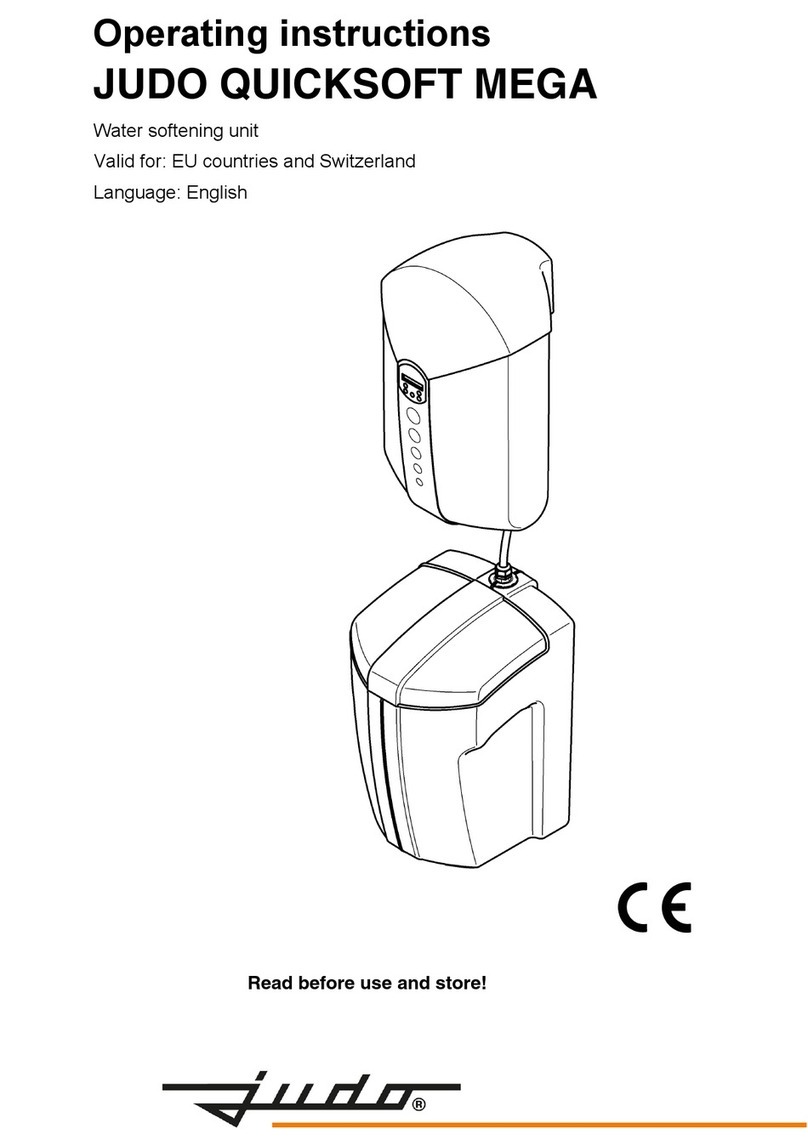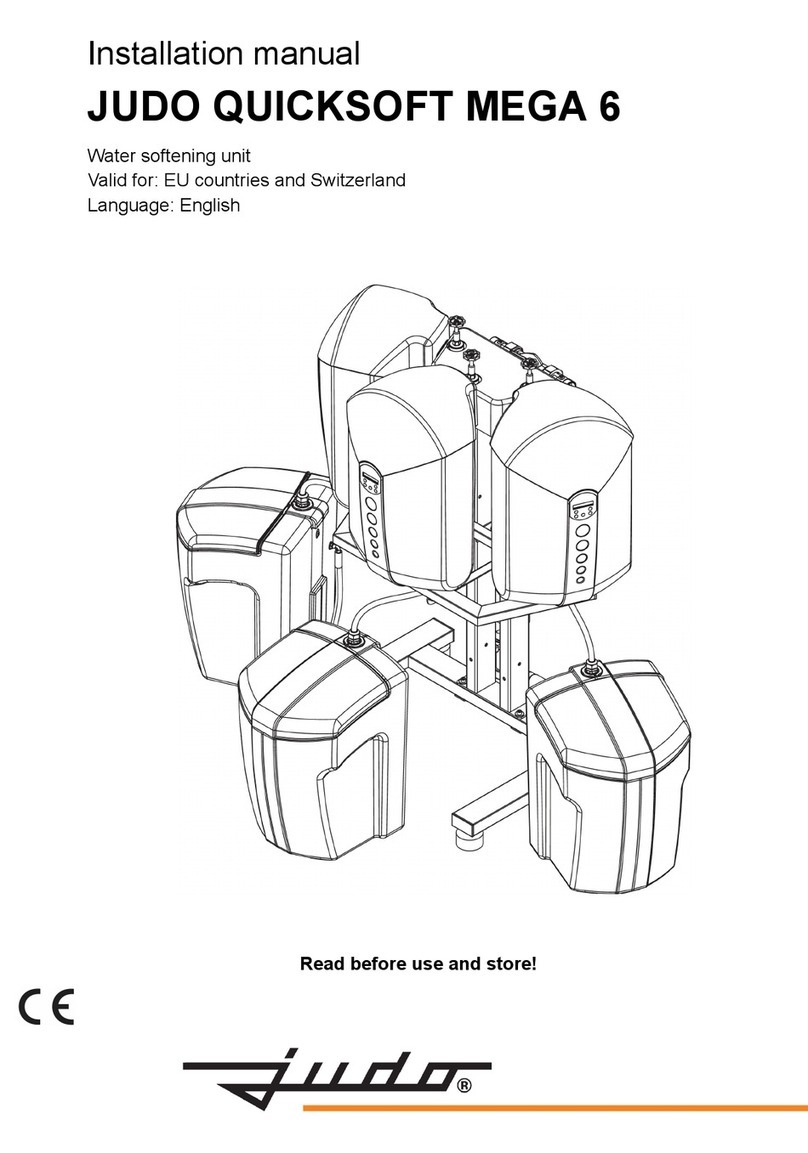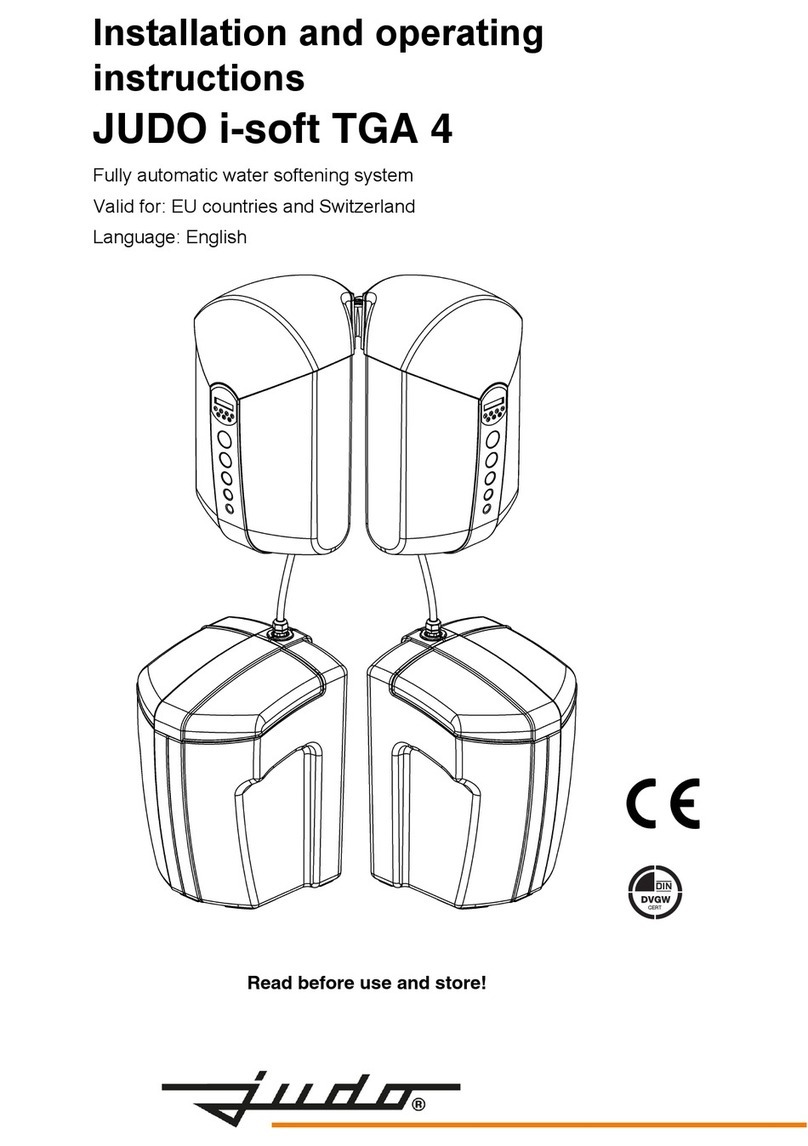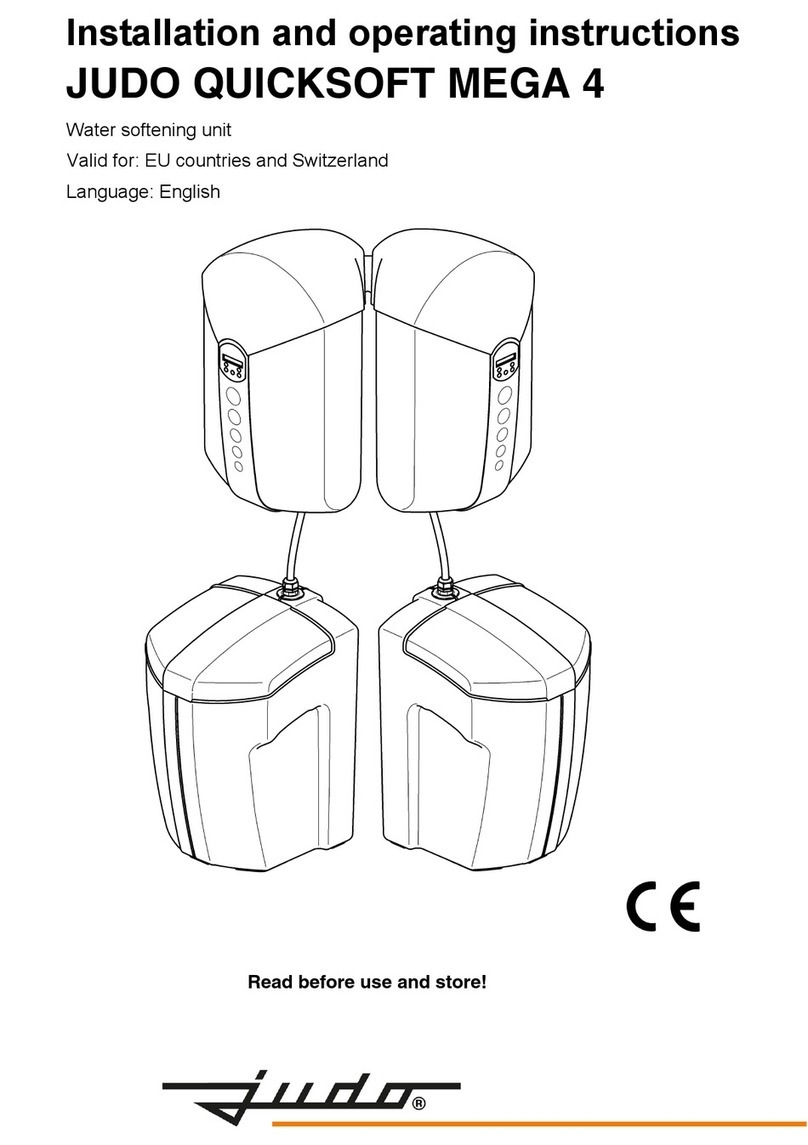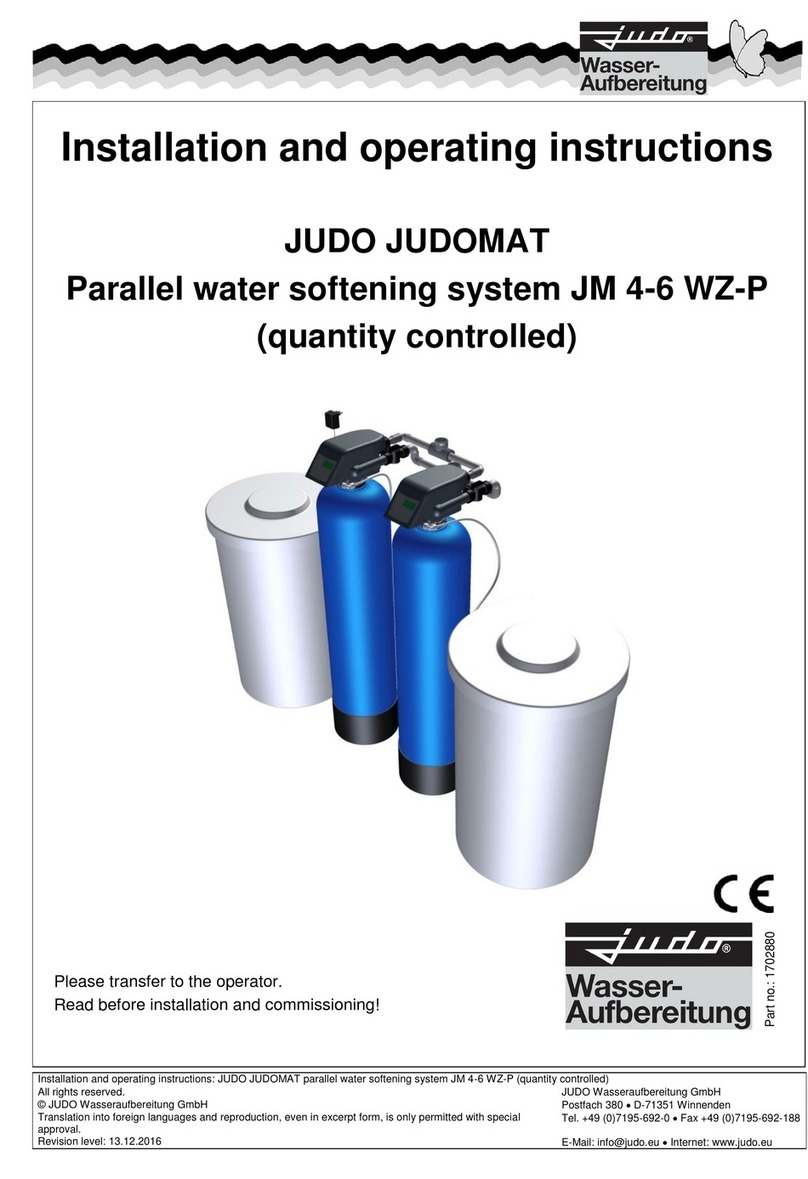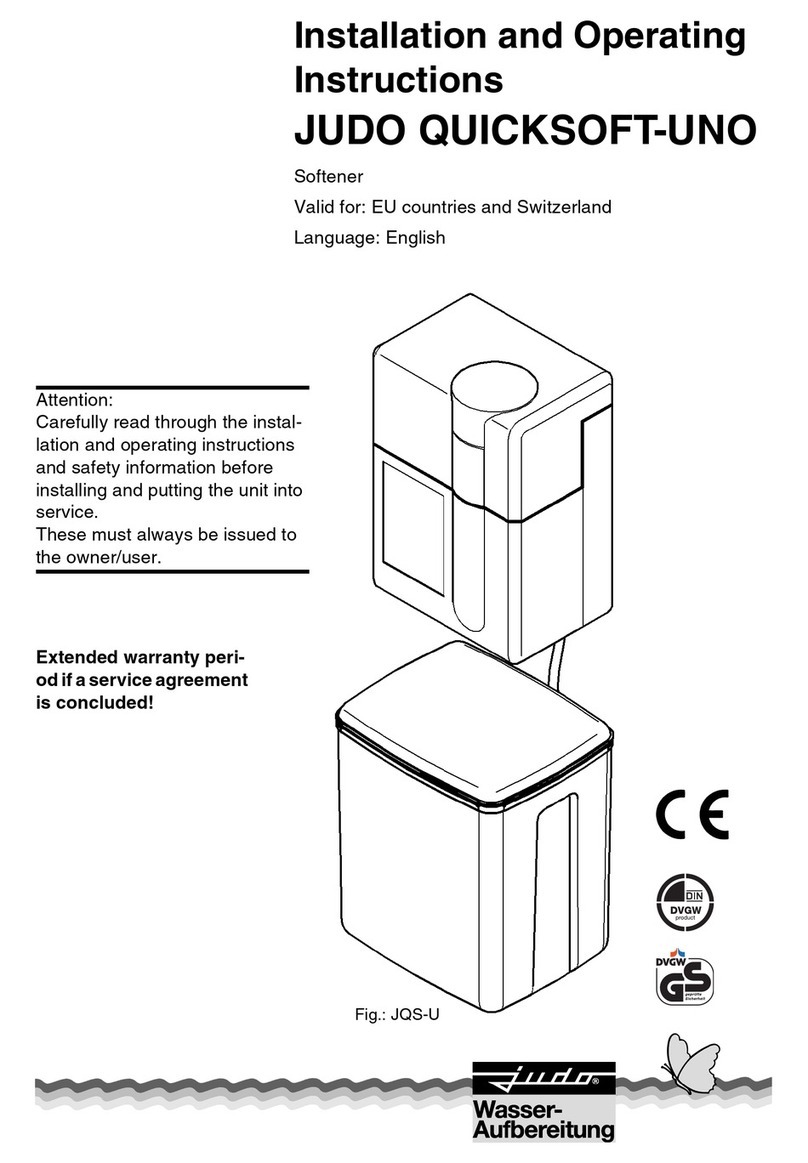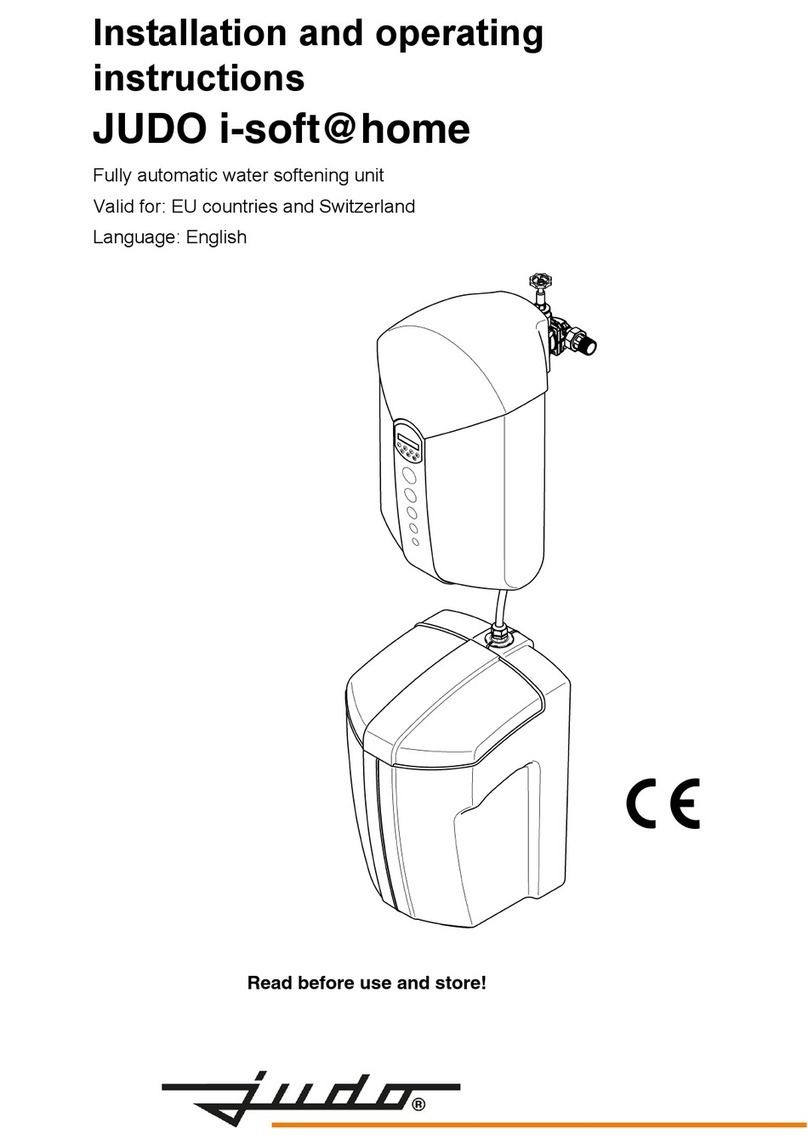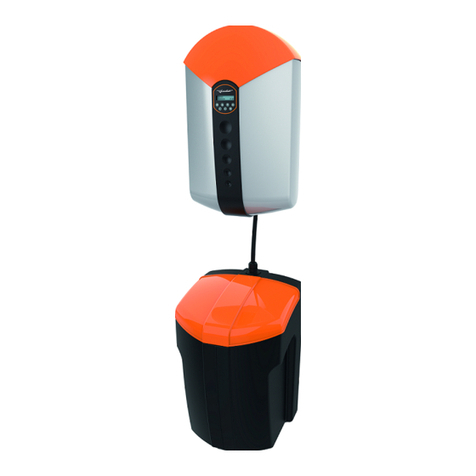
JUDO i-soft@home 5 9
Installation
4Installation
4.1 General
Installation must only be performed by suit-
ably qualified technical personnel.
The chapter 2 “Intended use” must be ob-
served without fail!
The pipe must be able to safely support the
water softening system.
Otherwise mechanical damage to the pipe
up to and including breakage can result.
This can result in severe water damage.
Should such an event occur, persons in the
vicinity of the water softening system are ex-
posed to a risk of injury of harm because of
the large water volumes that could escape.
The supplied support elements are used for
additional support and fixing of the pipe (see
chapter 4.2.3 “Installation of the support ele-
ments”).
The spatial requirements of the system can
be found in chapter 9.3 “Installation dimen-
sions”.
At least 300 mm clearance is required
above the water softening system, so that all
maintenance work can be properly per-
formed.
4.1.1 Requirements for the place of
installation
– The ambient temperature must not ex-
ceed 30 °C!
– So that it is possible to safely drain the
waste water (regeneration) during oper-
ation and also in the event that a system
defect occurs, the specifications given in
chapter 4 “Installation” must be precisely
followed!
If the waste water cannot be safely and
completely drained, it is possible that
property damage to the home and fur-
nishings may be caused by the water.
– A shut-off valve must be installed up-
stream and downstream of the water
softening system! This allows the water
supply to be disconnected for water sof-
tening system maintenance, repairs or in
case of malfunction. Likewise flooding
and severe water damage to household
furnishings and equipment can be avoid-
ed in this way.
– The installation room must be dry and
free from frost. Unauthorised persons
must not be able to access the water sof-
tening system.
– The water softening system must not be
subject to severe impacts.
– The device can be installed in all com-
mercially available drinking water pipes.
– Installation of the water softening system
upstream of the water meter is forbid-
den!
– Installation downstream of the protective
filter as per DIN EN 13443-1 and DIN
19628.
4.1.2 Mounting orientation
4.1.3 Power supply
The mains voltage must not be interrupt-
ed (e.g. via a light switch).
To ensure fault-free operation, ob-
serve the following requirements:
A permanent power connection (230
V, 50 Hz) must be available.
Always install the water softening
system in an upright position
(± 5°)! If this is not observed, in-
correct functioning may result.
A splash-proof socket, complying
with the legal regulations for wet are-
as, is required for the power supply
unit.



